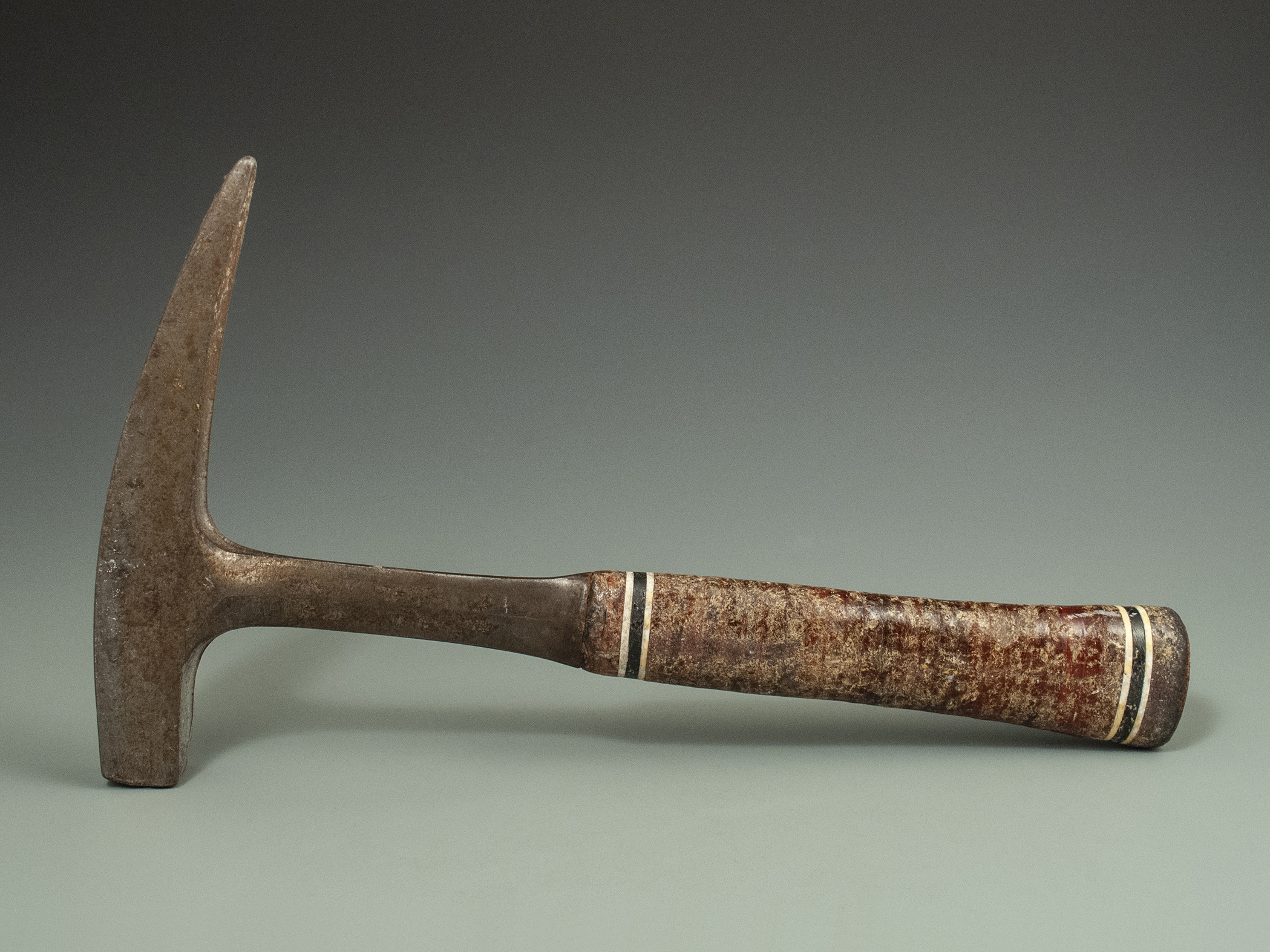Geologist’s Hard Rock Hammer
Garden City, NY, 1973

There are places that draw travelers, but there are names as well: Lhasa, Hollywood, Timbuktu. Throughout Central Asia, names that have always beguiled me whisper tales of salt traders, camels, the mysteries of silk: Samarkand, Bukhara, Tashkent.
During my visit to Almaty, I was introduced to a lovely Kazakh woman who worked for a U.S. aid agency as a translator. She took a day off to be my guide. Almaty, she told me, means “Father of Apples”; it is the place where all apples originated. She remarked on how the Soviets—though their architecture was bleak—had planted countless trees in the city: so many trees that one can walk across Almaty and never leave their shade. We visited markets selling mare’s yogurt, shared a lamb sandwich under a tree, and mused about her Mongol heritage. By the day’s end, we were holding hands. When we parted, she gave me this small painting as a gift.
Travel, for me, is more about people than places. On a side trip to neighboring Uzbekistan, I’d sketched every character in detail: Artur, the droll but perpetually disoriented driver who spirited me from the wild subway stations of Tashkent to sandy Samarkand; old Dya Dya (“Uncle”) Sinia, navigating the potholed road to Bukhara in his Volga sedan as the white sun baked my knees like potatoes; Philip and Michele, two enterprising Peace Corps volunteers who were bringing internet access to the ancient cities of the Silk Road: the world’s first information superhighway.
But I got lazy in Kazakhstan, and didn’t keep up my journal. That comes with a cost.
Though any guidebook will remind me how to find the Yasawi Mausoleum or Bibi-Khanym Mosque, my dark-haired guide is now lost to time. She was as warm and elegant and tall as the Kalyan Minaret at sunset… but I have forgotten her name.
